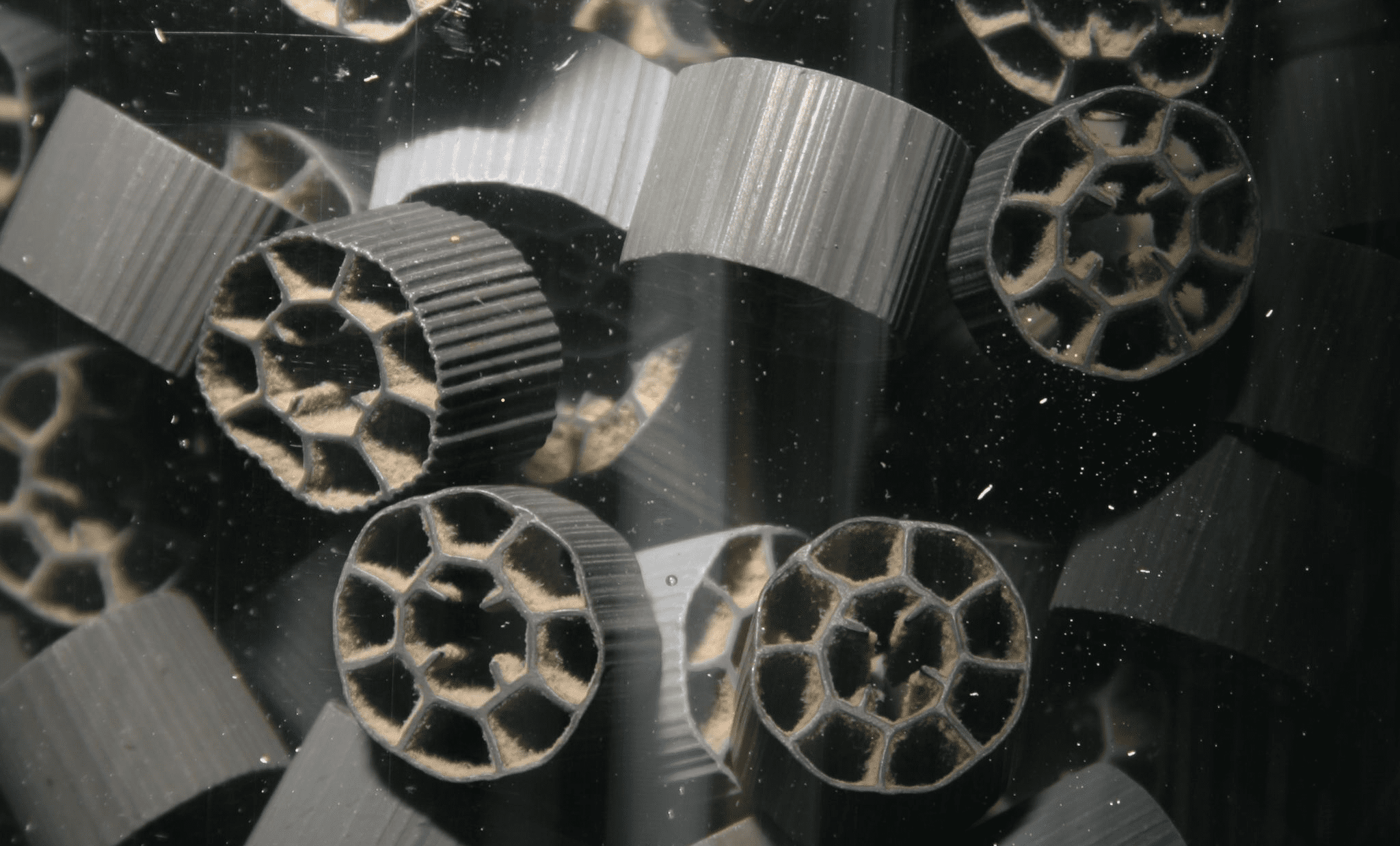Without knowing it, you may have already come across these small plastic cylinders on the banks of a river, a lake or on a beach. Contrary to what their name may suggest, biomedia are far from being biological. But then, what is a biomedia and what is it used for?
15 years ago Surfrider Foundation Europe detected a new form of pollution on the South Atlantic coast. The culprits, these small cylinders that look like plastic pie charts have since been identified: they are biomedia, also called biocarriers. Today, this pollution is affecting coastlines around the world.
What is the role of biomedia?
Also known as filter media, these small plastic honeycombed media are used for the treatment of domestic, industrial and agricultural wastewater. They serve as a support for bacteria that digest organic matters in suspension more quickly, allowing for a more efficient treatment of wastewater. In concrete terms, biomedia will improve the development of bacteria that will eat the undesirable substances in our wastewater.
Ranging from a few millimeters to several centimeters, biomedia come in different sizes, shapes, surfaces and colors. There can be millions of them in a single basin.
All water contaminated by human activities must be treated by wastewater treatment systems. It is then discharged into the natural environment after having been cleaned of the pollutants it contains.
Sewage treatment is carried out in several phases – usually five. One of them is the biological treatment phase during which the organic matter is decomposed by bacteria. It is during this phase that the biomedia technology is used.
Who is using biomedia?
Wastewater treatment processes using biocarriers are currently used by :
- Collective wastewater treatment (the most common wastewater treatment system in urban areas), operated by local authorities or private groups such as Veolia Water Technologies, Suez or Evoqua Water Technologies, which also design wastewater treatment plants and may design their own biological filter media models
- Non-collective wastewater treatment , not directly connected to the collective network. This category of domestic plants includes private individuals, usually households or groups of households using independent installations, as well as small industrial companies
- Industrial treatment , as industries are required to treat their wastewater before discharging it due to the higher concentration of pollutants they contain. Their wastewater is then either discharged into the environment, reused after being treated, or redirected to the collective network. This includes the agricultural sector as well as all types of industry (paper and cardboard, wood, food processing, wine, fish farming).
© Headworks International
Why do we find biomedia on beaches?
Sewage treatment facilities discharge wastewater into the natural environment, either into waterways or directly into the ocean. There are standards and regulations governing the discharge of wastewater into the environment. Biomedia are supposed to be used in closed circuits, but this does not prevent accidents from occurring, which may cause them to be discharged into the natural environment. They can then escape from the treatment plants and sometimes travel hundreds of kilometres in rivers before ending their course in the ocean.
Often, the accidental release of biomedia into the environment is not due to a single factor, but to a combination of several factors, such as bad weather (storms, heavy rain), the overflow of treatment basins, technical failures or insufficient monitoring. For example, a storm (natural factor) can lead to the leakage or overflow of a basin not properly equipped with a mesh (human factor). Clogged outflow mesh, improper storage, or careless handling can all lead to biomedia leakage. This is illustrated by the incident that occurred in Corbeil-Essonnes in February 2010.
A significant amount of biomedia ends up directly in waterways and in the ocean. This raises the question of the impact of leakages, constituting an additional source of risk for both the environment and our own human health.

